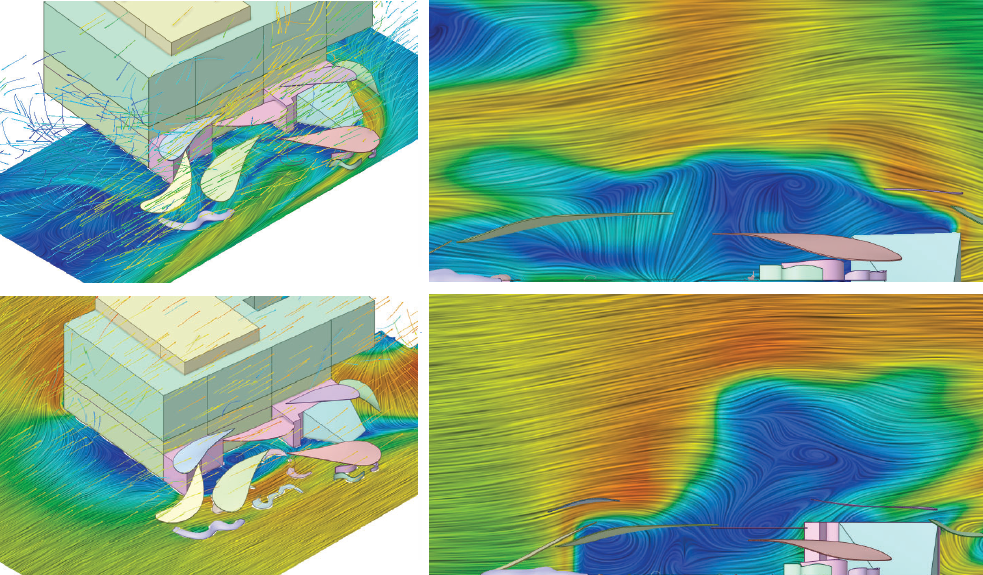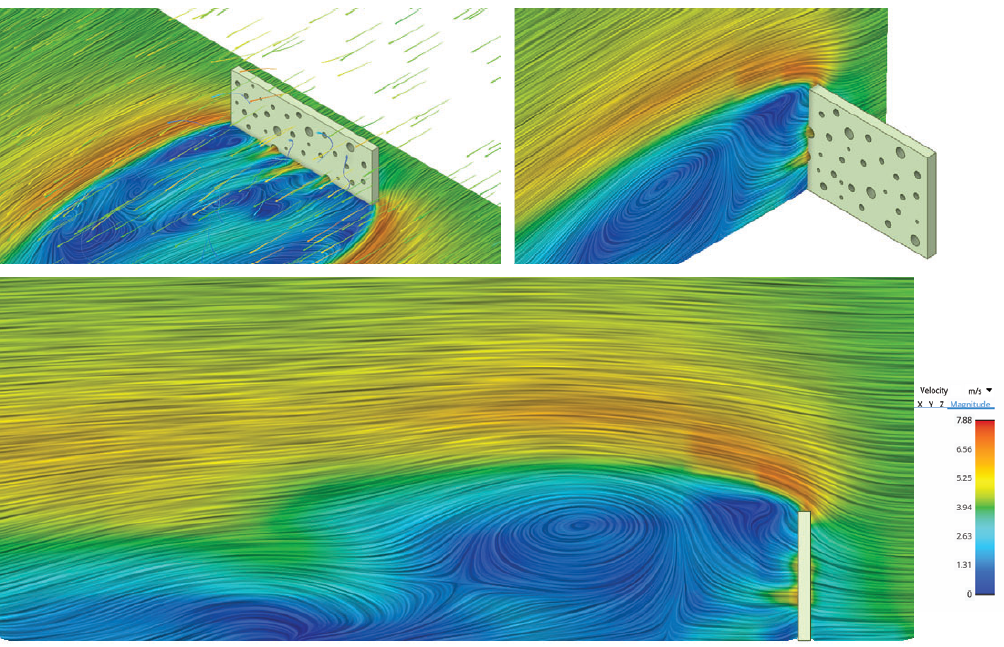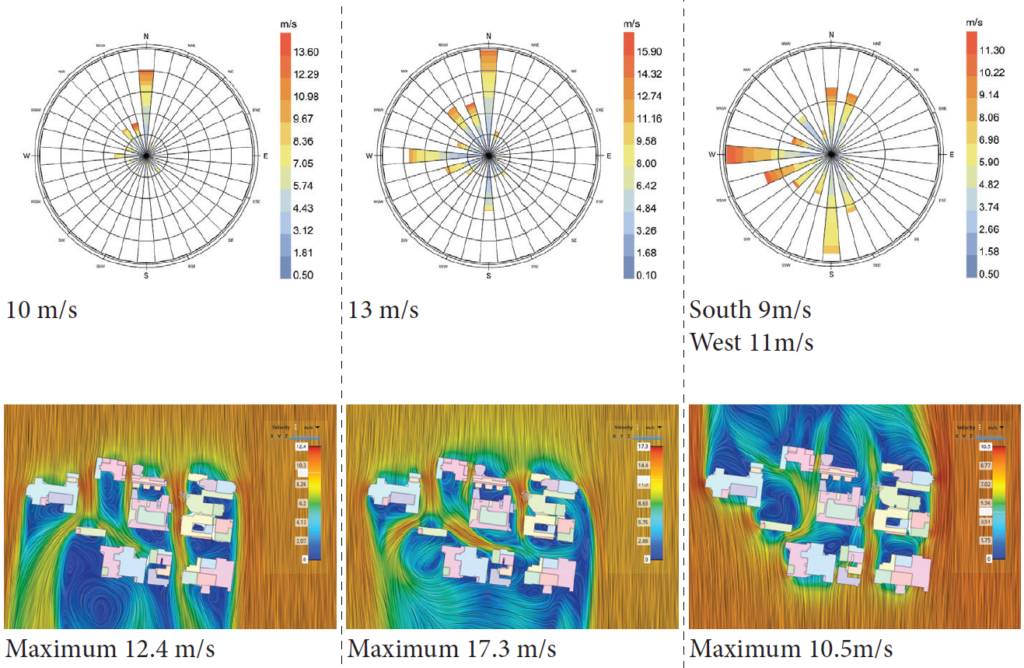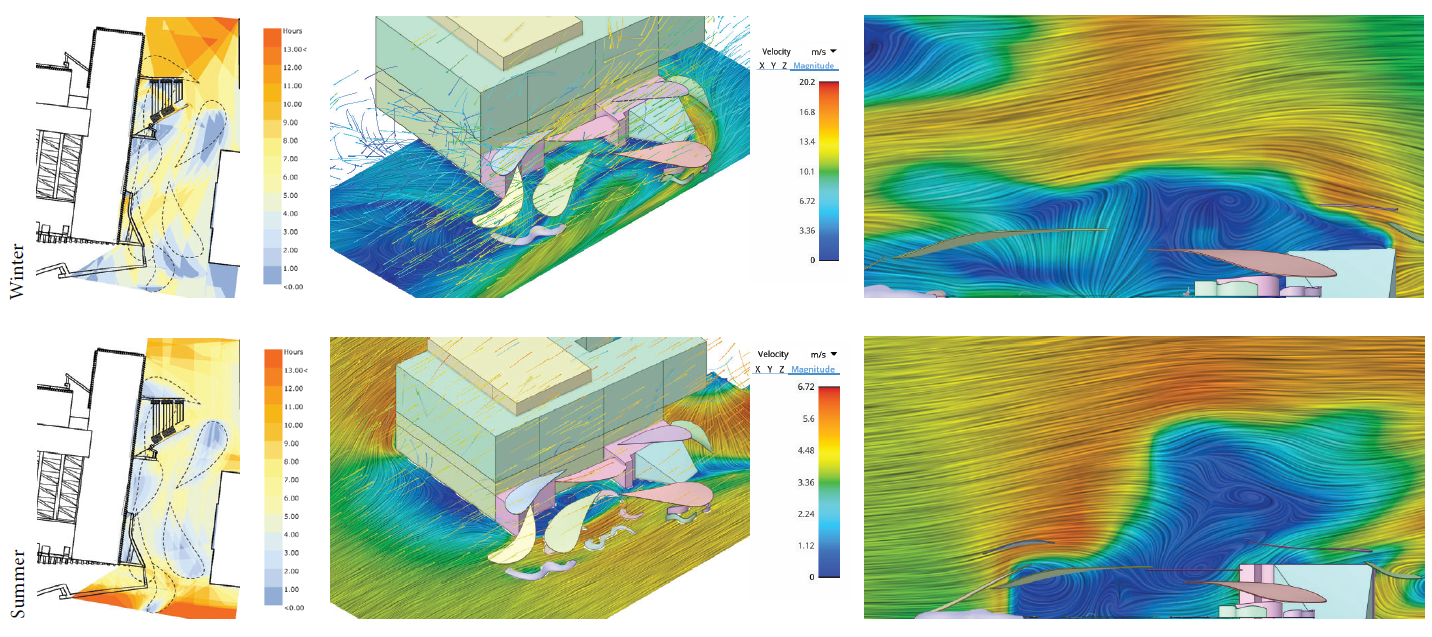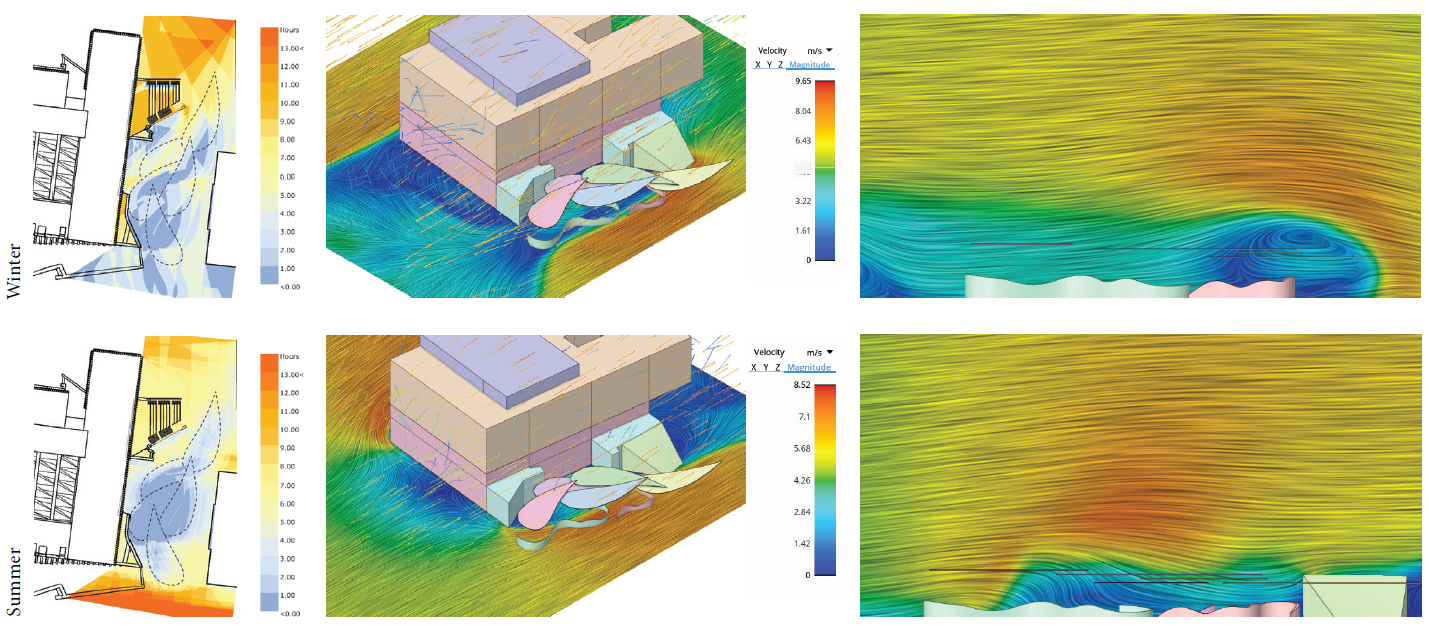Can you describe the subject you teach which has begun using Ansys Discovery?
This subject is an intensive three-week program that caters to a diverse group of 25 students from various disciplines. Among them are architecture students, landscape architects, urban designers, and urban planners. Students will have the opportunity to acquire foundational knowledge in Computational Fluid Dynamics (CFD) simulation, enabling them to develop and explore their designs through simulation techniques in Ansys Discovery.
Student teams are assigned a specific site, which changes annually. It could be on Melbourne Uni's campus or elsewhere in Melbourne. Sometimes, we collaborate with the local council. Last year, for instance, we worked in a part of Chinatown during the outdoor dining initiative and the creation of parklets in converted car park spaces. This served as a catalyst to explore the implications of spending more time outdoors and address the challenges it presents, particularly with Melbourne's unpredictable weather and distinct seasons.
The design brief goes beyond simply identifying and solving a problem. It pushes students to engage with the dynamic nature of microclimates. It's not just about designing for a heatwave; it's about considering a range of variable climate effects. This makes the task more demanding as they need to envision how people can comfortably experience different climates and how the built environment can adapt and accommodate these conditions.
To achieve this, we focus on understanding and harnessing the behavioural characteristics of temperature in Melbourne. For instance, we know that wind flow generally follows a north-south pattern, and southerly winds tend to be colder. Can we leverage this knowledge when conceptualising various outdoor spaces where people would want to spend time? Can we capitalise on these patterns to enhance the design? It's about identifying these behaviours and exploring the potential they offer.
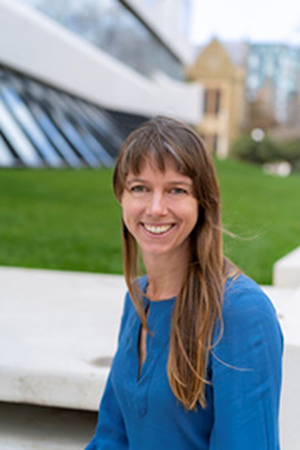
We're aiming to incorporate simulations at an early stage of this process. Instead of having students develop an entire design and then test it, we're advocating for the integration of simulations right from the start. By doing so, they can lay a much stronger foundation for their design, rather than merely validating it at the end when numerous elements are already fixed, making changes difficult or even impossible.
We're encouraging students to embrace this approach with enthusiasm and confidence, viewing simulations as a creative tool that can generate unexpected insights. It's not about running simulations to confirm what they already know; it's about being open to surprises. We place great emphasis on students starting to use the tool, allowing themselves to be amazed. They need to be observant, take their time, and explore what lies beyond their existing knowledge.
What design ideas were you hoping to encourage the students to explore?
I've been teaching this unique subject for eight years. We've previously used simpler CFD tools which, although user-friendly, lacked precision so it was difficult for students to fully trust those results. However, there was always value in allowing students to witness the physical effects of small deliberate changes. We’ve also used more complex tools, but with these, students can get lost in the procedure or are unable to get results at all. Now, with Ansys we potentially have the best of both worlds – we have immediate feedback, plus sufficient accuracy to promote meaningful discussion amongst our students. So we’ve found Ansys Discovery to not only an amazing teaching tool, but also a fantastic early-stage design process tool.
Figure: Example of student project work, informed by Ansys Discovery CFD results (supplied)
In my research, I've encountered people who suggest ignoring the wind because they feel it is too challenging to model accurately. I find that notion amusing because we can't simply switch off the wind in outdoor spaces! We must confront it head-on. I'd rather work with 80% inaccuracy and have some understanding of what's happening than pretend it doesn't exist. Otherwise, we risk designing spaces that people can't or won't use, neglecting significant variables, particularly in wind-prone Melbourne.
There's a need in landscape and urban design to understand the upstream effects, to look beyond isolated buildings or spaces. We encourage students not to rely on a single model due to its limitations in resolution. Instead, we ask them to consider the urban scale, to think about sequences of buildings and their interactions. They need to take control of specific parts they want to test within that context. Simulation helps them grasp the bigger flow effects and the interconnectedness of different elements. By understanding the relationship between scales, they can comprehend the localised effects that emerge. It also aids their understanding of CFD and how meshing works at larger scales.
We often find that students, despite our advice, try to incorporate small details into their massive urban models, unaware that it won't have any meaningful impact. We guide them to break the model apart and test its individual components, encouraging them to explore the sequence of effects and interventions. Sometimes, they need to experience this process firsthand rather than being told. In successful student projects, we observe modelling at the precinct scale, where they analyse how wind moves through and around multiple buildings. They then zoom in to examine specific building edges, considering the vertical interface and its complexities. Further down, they focus on finer details such as vegetation, ground plane changes, or structural elements, bringing everything together.
Can you describe some of the ideas that students were able to test using Discovery? How did the student’s design ideas evolve as they refined their design using feedback from CFD results?
Some students tend to base their designs on existing knowledge and expected wind behaviours, like “if I place a tree here, it will go up and around”. However, relying too much on generalisations limits their options, and it's unlikely to work exactly as expected in a specific context. Working with just one rule for one thing makes it difficult to navigate between scales and piece everything together on a complex project.
When students start using CFD, things change. They can test their assumptions, be surprised, and explore more interesting ideas. They observe how wind moves between buildings, gets squeezed, and speeds up, and they learn to use plants to diffuse the wind for desired effects. We can discuss not only heating and cooling, but also experiential and aesthetic outcomes. It's easier for them to layer all the aspects of design we seek, achieving a good performative outcome while making it visually and experientially appealing. They can accomplish this faster with CFD tools like Ansys Discovery.
We encourage group work, where some students focused on using the tools while others generated ideas. Each individual student ran the simulations, and in the final phase, the groups decided how to allocate tasks. The better groups created a matrix of everything they wanted to simulate and worked together, running multiple simulations. They could then compare and analyse the results collectively. Our well-equipped lab facilitated this process, with multiple computers running simulations across different scales, enabling students to make their own comparisons.
This process using Discovery was very fast compared to other programs we've used. Instead of setting it up, pressing go, and waiting, we received more immediate feedback and could discuss and ideate as we worked. It certainly enhanced the idea generation and overall experience for our students.
I recall one particularly fun project which envisioned a complete makeover of one side of a building. The idea was to channel the air down and push it through using a screen. It was quite audacious considering the building's heritage, but the students did an impressive job of proposing it. They approached the project by considering both sides of the building as a larger system, which was both bold and elegant.
Another project embraced the notion that seasons aren't rigid beginnings and ends, but rather conditions that blend into one another. This understanding allowed them to explore various gradients and design around edges. They sought those gentle breezes, not extreme winds, and incorporated vegetation and shade installations that created dappled effects, embracing the in-betweenness.
This was a beautiful project. It was also a great way to engage with some of our international students who bring culture knowledge to working with conditions of climate and seasons through ideas like energy flows and seasonal delight. This is also where working with CFD served as a visual communicator that transcended language barriers, making the knowledge and the ideas more accessible to everyone.
As a teacher, what did your use of CFD simulation with Discovery add to the class that you would not have otherwise been able to achieve?
I believe that fostering open and live discussions is crucial. With Discovery, and those faster iterations, I could observe where discussions are taking place, which is great. Engaging in more open conversations helps us gain a better understanding of the various environmental factors at play. One critical challenge for wind engineering within the built environment is being able to visualise the invisible. Encouraging students to think beyond just the objects and consider the atmosphere and climate as part of space is crucial, particularly for architects who tend to focus in on tangible elements. Understanding what it will feel like to be in a particular space can be a challenge for students.
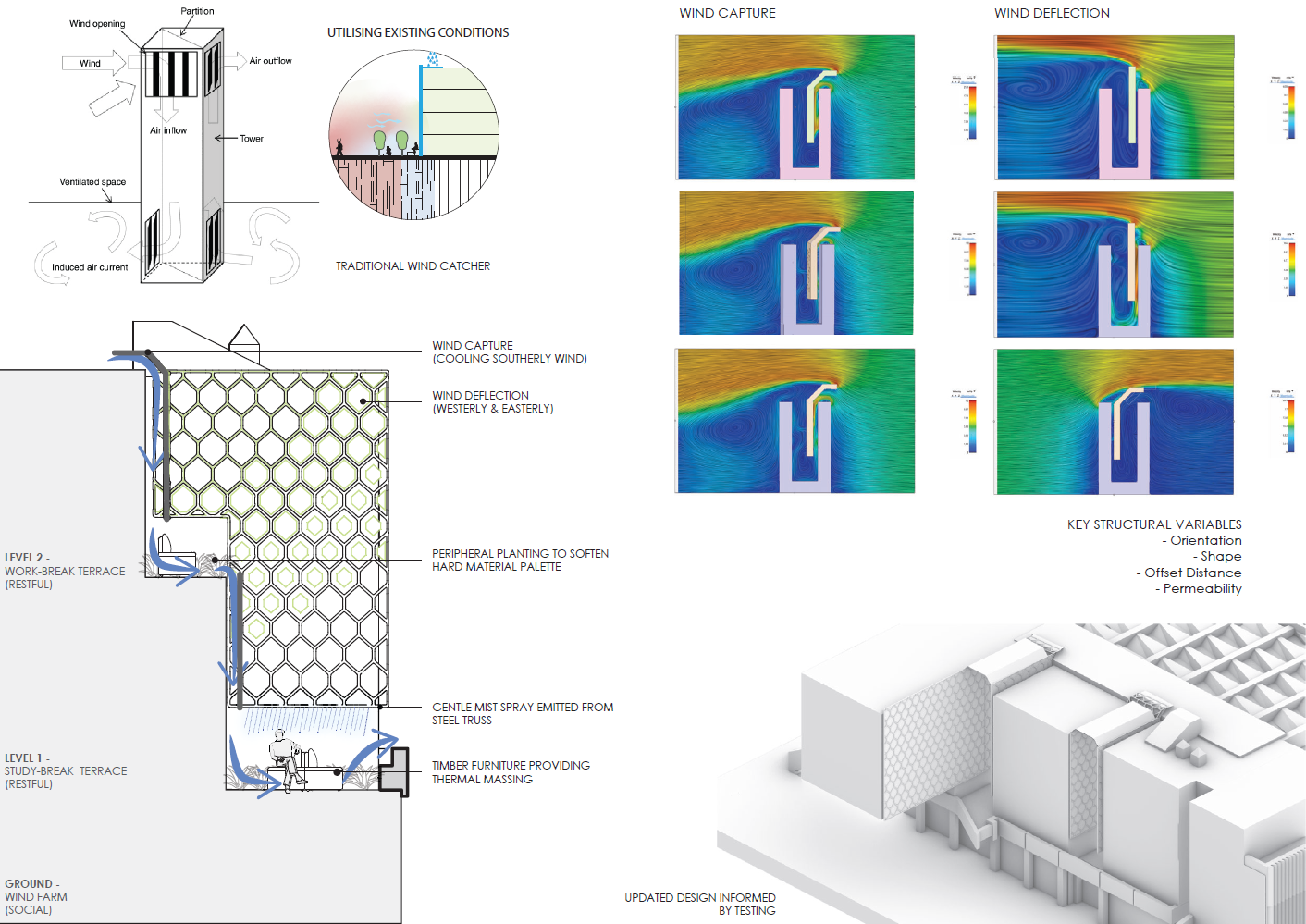
Figure: Example of student project work, informed by Ansys Discovery CFD results (supplied)
In one project, the students successfully used simulation to demonstrate how their design incorporated multiple elements for how they worked together in a system. This allowed them to showcase the intriguing organic shapes they have created but also demonstrate how the design would "feel" to occupants. Furthermore, they used simulation results to represent these concepts in a more engaging visual manner, employing swirls and other visual elements. All of this stems from their initial work with simulations. The challenge lies in effectively communicating these ideas through their final posters.
What was your experience in dealing with LEAP and Ansys to help integrate Discovery into your class?
I’ve found that the students really enjoyed using simulations in Ansys Discovery. They revel in the freedom and the immediate visual feedback it provides. In some cases, I’ve found some students often pushing simulations to reach speeds of 50 kilometres an hour, just to witness the sheer beauty of it all. To accommodate their enthusiasm, we dedicate ample time during our day-long workshops, encouraging them to explore and experiment to their heart's content.
I found Ansys Discovery to be by far the best option for introducing and teaching CFD. We’ve had a fantastically productive subject. Students also love it! Here are some quotes from our last cohort of students (these are both Masters students in Landscape Architecture):
- “Ansys Discovery provided a straight-forward workflow for quick testing and iteration of our designs. We utilised the program from initial speculation, to refinement, and then to final performance testing, which significantly aided our overall design process.” Adam Nohel
- “I found Ansys Discovery particularly helpful to test initial broad concepts. The CFD simulations definitely gave us a more evidence based design outcome. I thought it was great that we were able to use the software and hope to again in the future.” Anselm Koning
- "Ansys Discovery was easy to use and understand compared to other CFD software and was helpful for quickly testing the wind effects of different structures and configurations. The scale and complexity limitations weren't a problem as we were only testing general wind behaviour and wanted to avoid long simulation times and complicated settings. " Toby McCarney
Wendy Walls is a lecturer in Landscape Architectural design at the University of Melbourne, Australia. Wendy’s research and teaching focuses on the use of data and digital technologies for designing with dynamic climatic phenomena in external open space, innovative design methodologies and interdisciplinary practices. Her PhD addressed issues of thermal sensation in Australian cities where current climate change predictions suggest more frequent, intense and dangerous heatwaves. Wendy has experience with teaching CFD at an undergraduate and postgraduate level and currently works with Ansys Discovery to provide an engaging way to teach her students critical concepts involving airflow and heat transfer in building design.


